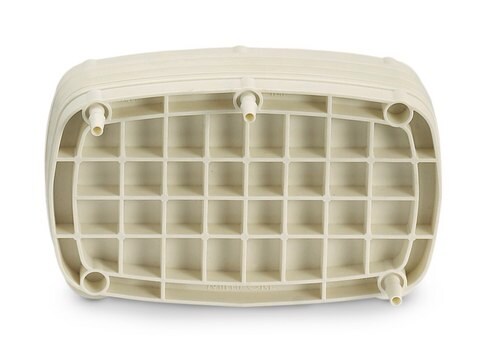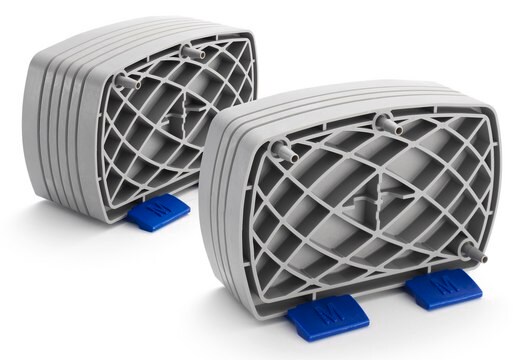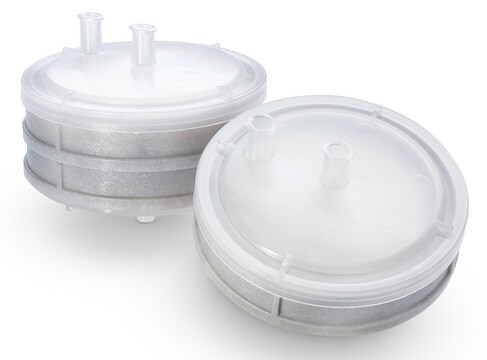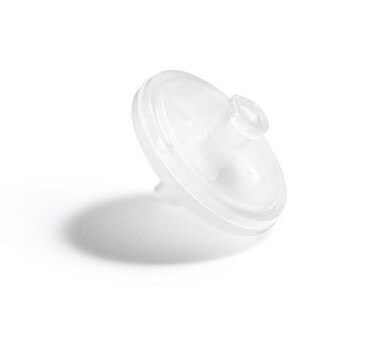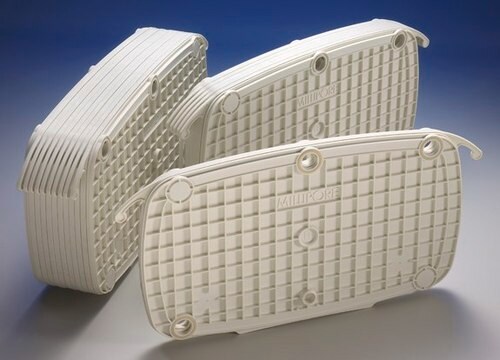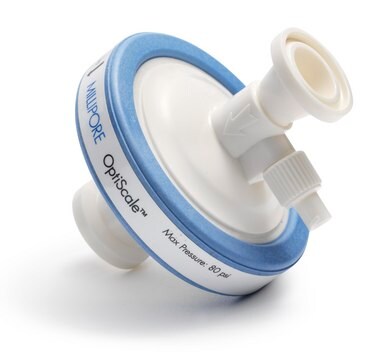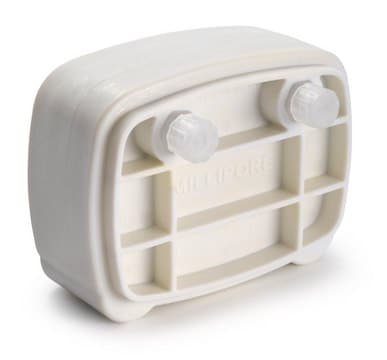MCE5023CL3
Millistak+® Depth Filter in μPOD format
CE50, cellulose, filtration area 0.0023 m2, hydrophilic
Synonim(y):
Millistak+ Depth Filter in Pod format, CE50 media series, 23 cm2 surface area, Luer fitting connection
About This Item
Polecane produkty
Materiały
cellulose
glass fiber-reinforced polypropylene
Poziom jakości
opis
For clarification of serum, plasma, vaccines, cell culture or other fluids.
Właściwości
hydrophilic
producent / nazwa handlowa
Millistak+®
Parametry
1.0 bar max. differential pressure (15 psid) at 40 °C (Reverse)
2.1 bar max. differential pressure (30 psid) at 40 °C (Forward)
Wysokość
6.6 cm (2.6 in.)
Długość
8.9 cm (3.5 in.)
powierzchnia filtracyjna
0.0023 m2
zanieczyszczenia
<0.25 EU/mL (LAL test, Aqueous extraction)
moc wejściowa
sample type liquid
przewodność
1.52 – 1.94 μS/cm (product water; post autoclave (1 cycle of 60 minutes at 123 °C) and pure water flush of 5 liters per ft²(50 L/m²) of media surface area)
stopień filtra
CE50
Warunki transportu
ambient
Powiązane kategorie
Opis ogólny
This CE50 media series delivers optimal performance through a gradient density matri, ideal for primary (coarse) clarification applications. Millistak+® Pod filters are available in three distinct series of media grades in order to meet your specific needs - DE, CE and HC.
The Millistak+® Pod system is ideal for a wide variety of primary and secondary clarification applications, including cell cultures, yeast and E. coli lysates post centrifuge, E. coli refolds, media, vaccines, plasma proteins and sera.
Easy to Use
With the compact, modular design of our Millistak+® new Pod system, you can increase productivity and shorten cycle times.
Installation and setup of the Pod system is simple and straightforward. The unique design of the disposable adapters and disposable manifolds makes it easy to connect the Pod filters to rest of the unit operations in the process. The self-contained and disposable nature of the system protects operators from exposure to biohazards and eliminates maintenance as well as cleaning validation requirements.
Zastosowanie
Cechy i korzyści
- Low hold-up volume for greater product yield
- Broad range of media types offered in single and multilayer products
- Flexible, modular format offers scalability from 5 to 12,000 liters or more
- Patented disposable design eliminates need for housing, CIP or cleaning validation
- Self-contained Pod filters protect operators from exposure to biohazards
- Robust construction is easy to use and set up
- Smaller footprint facilitates use in tight spaces
Charakterystyka techniczna
Uwaga dotycząca przygotowania
2 autoclave cycles of 60 minutes at 123 °C.
Informacje prawne
Kod klasy składowania
10-13 - German Storage Class 10 to 13
Certyfikaty analizy (CoA)
Poszukaj Certyfikaty analizy (CoA), wpisując numer partii/serii produktów. Numery serii i partii można znaleźć na etykiecie produktu po słowach „seria” lub „partia”.
Masz już ten produkt?
Dokumenty związane z niedawno zakupionymi produktami zostały zamieszczone w Bibliotece dokumentów.
Powiązane treści
Dostosowana do potrzeb produkcja szczepionek wirusowych rozwiązuje specyficzne dla wirusa wyzwania dzięki współpracy.
Szablonowy proces produkcji żywych szczepionek wektorowych. Wyzwania: utrata wydajności, filtracja, agregacja, skalowanie. Współpraca pozwala pokonać przeszkody produkcyjne.
Szablonowy proces produkcji żywych szczepionek wektorowych. Wyzwania: utrata wydajności, filtracja, agregacja, skalowanie. Współpraca pozwala pokonać przeszkody produkcyjne.
Dostosowana do potrzeb produkcja szczepionek wirusowych rozwiązuje specyficzne dla wirusa wyzwania dzięki współpracy.
Nasz zespół naukowców ma doświadczenie we wszystkich obszarach badań, w tym w naukach przyrodniczych, materiałoznawstwie, syntezie chemicznej, chromatografii, analityce i wielu innych dziedzinach.
Skontaktuj się z zespołem ds. pomocy technicznej